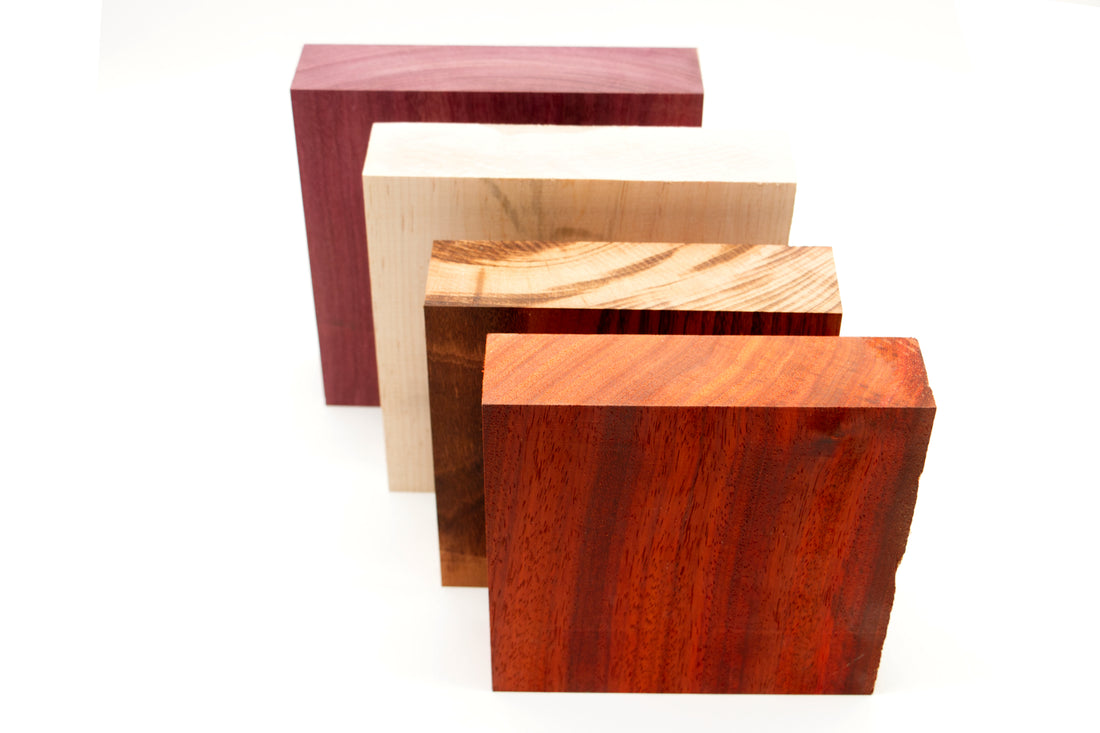
Using Bowl Blanks to Make Beautiful Wood Bowls
Share
Have you ever marveled at the graceful curves and rich grain patterns of a handcrafted wooden bowl? With bowl blanks, you can unlock the beauty of woodturning and create stunning pieces in your own workshop. These pre-cut blocks of wood provide the perfect starting point for crafting bowls of various sizes and styles. As you shape the spinning blank on your lathe, you'll reveal the unique character hidden within each piece of timber. Whether you're a novice turner or a seasoned artisan, bowl blanks offer endless possibilities for expressing your creativity and honing your skills. Discover how these versatile blanks can elevate your woodturning projects to new heights.
Exploring the World of Bowl Blanks for Woodturning
Bowl blanks for woodturning open up a realm of creative possibilities for woodworkers. These specially prepared blocks of wood serve as the starting point for crafting beautiful, functional bowls on a lathe. When selecting bowl blanks, consider factors such as wood species, grain pattern, and moisture content to achieve your desired results.
Types of Bowl Blanks
Bowl blanks come in various shapes and sizes, from round to square, allowing you to experiment with different forms. Some popular wood species for turning include maple, cherry, and walnut, each offering unique characteristics in terms of color, grain, and workability.
Preparing Your Blank
Before mounting your blank on the lathe, ensure it's properly prepared. This may involve sealing the end grain to prevent cracking, rough-shaping the blank with a bandsaw, or attaching a faceplate. Taking these preliminary steps will help you achieve better results and extend the life of your turning tools.
By mastering the use of bowl blanks for woodturning, you'll unlock a world of artistic potential, transforming raw wood into stunning, one-of-a-kind creations.
Selecting the Right Bowl Blanks for Your Woodturning Projects
When embarking on your woodturning journey, choosing the right bowl blanks is crucial for creating stunning pieces. Bowl blanks for woodturning come in various wood species, sizes, and moisture levels, each offering unique characteristics for your project.
Consider Wood Type and Grain Pattern
Select a wood species that complements your desired aesthetic. Hardwoods like maple, cherry, and walnut are popular choices for their durability and beautiful grain patterns. Softwoods can also yield interesting results but may require more careful handling.
Assess Moisture Content
The moisture content of your bowl blank affects both the turning process and the final product. Green wood is easier to turn but may warp as it dries. Kiln-dried blanks are more stable but can be harder to work with. Consider your skill level and project timeline when choosing between the two.
Size and Shape Matters
Choose a blank size that accommodates your intended bowl dimensions, allowing for waste during turning. Round blanks are ideal for beginners, while more experienced turners might opt for square or natural-edge blanks for added challenge and unique designs.
Unleashing the Potential of Bowl Blanks: Techniques and Inspiration
Mastering the Art of Bowl Blank Selection
When it comes to woodturning, selecting the right bowl blanks is crucial for creating stunning pieces. As you delve into this craft, you'll discover that bowl blanks for woodturning come in various species, sizes, and grain patterns. Each blank holds unique potential, waiting to be revealed through your skillful hands and tools.
Techniques for Transforming Blanks into Masterpieces
To unlock the true beauty of your bowl blanks, consider these expert techniques:
- Start with proper mounting and centering to ensure balance
- Use sharp tools and take light cuts to minimize tear-out
- Work with the wood's natural grain for enhanced aesthetics
- Experiment with different bowl shapes to showcase the blank's character
Finding Inspiration in Nature and Form
Let the inherent qualities of your bowl blanks guide your creative process. The swirling grain of a burl or the striking contrast in spalted wood can inspire one-of-a-kind designs. By embracing the wood's natural features, you'll create pieces that are not only functional but also true works of art.
Finishing Techniques to Bring Out the Beauty of Bowl Blanks
The art of woodturning is not complete without mastering the finishing process. When working with bowl blanks for woodturning, the final touches can make all the difference between a mediocre piece and a stunning work of art. Let's explore some techniques to enhance the natural beauty of your wooden bowls.
Sanding for a Smooth Surface
Before applying any finish, proper sanding is crucial. Start with coarse-grit sandpaper and gradually work your way to finer grits. This process helps to remove tool marks and create a silky-smooth surface. Remember to sand both the interior and exterior of your bowl, paying special attention to any problem areas or rough spots.
- Begin with 80-grit sandpaper
- Progress through 120, 180, 220, and 320 grits
- Finish with 400 or 600 grit for an ultra-smooth feel
Always sand with the grain when possible to avoid scratches that might show through the finish.
Choosing the Right Finish
Selecting the appropriate finish for your bowl is essential to highlight the wood's natural beauty and protect it from wear and tear. Different finishes can dramatically alter the appearance of your bowl blanks for woodturning.
- Oil finishes: These penetrate the wood, enhancing its natural color and grain. Examples include linseed oil, tung oil, and Danish oil.
- Wax finishes: Provide a soft luster and are easy to apply. Beeswax and carnauba wax are popular choices.
- Lacquer: Offers a durable, high-gloss finish that dries quickly.
- Polyurethane: Provides excellent protection and comes in various sheens.
Consider the bowl's intended use when choosing a finish. Food-safe options are crucial for items that will come into contact with edibles.
Applying the Finish
Once you've selected your finish, proper application is key to achieving professional results. Here are some tips for applying finishes to your turned bowls:
- Apply thin, even coats for best results
- Use a lint-free cloth or high-quality brush to avoid leaving marks
- Allow adequate drying time between coats
- Sand lightly with fine-grit paper between coats for a smoother finish
For oil finishes, apply generously and allow the wood to absorb the oil before wiping off the excess. With lacquer or polyurethane, multiple thin coats will yield better results than a single thick coat.
Burnishing for Added Luster
After the final coat of finish has dried, consider burnishing your bowl for an extra touch of elegance. Burnishing involves rubbing the surface with a soft material to create a polished look. This technique can be particularly effective on oil or wax finishes.
To burnish your bowl:
- Use a piece of brown paper bag or soft cloth
- Rub the surface in circular motions with moderate pressure
- Continue until you achieve the desired sheen
This process compresses the wood fibers and creates a smooth, glossy surface that enhances the natural beauty of the wood.
Embellishments and Decorative Techniques
While a well-finished, natural wood bowl is beautiful on its own, you may want to add some unique touches to make your piece stand out. Consider these decorative techniques:
- Wood burning to create intricate patterns or designs
- Inlaying contrasting woods or materials like turquoise
- Carving or texturing certain areas of the bowl
- Adding a colored rim or foot using dyes or paints
These embellishments can transform a simple bowl into a one-of-a-kind masterpiece, showcasing your creativity and skill as a woodturner.
By mastering these finishing techniques, you'll be able to create stunning bowls that truly showcase the beauty of your carefully selected bowl blanks for woodturning. Remember, practice makes perfect, so don't be afraid to experiment with different finishes and techniques to find what works best for your style and the unique characteristics of each piece of wood.
Wrapping Up
As you embark on your woodturning journey, bowl blanks offer endless possibilities for creating stunning wooden masterpieces. By selecting the right blank, preparing it properly, and applying your newfound techniques, you'll unlock a world of artistic expression. Remember to prioritize safety, embrace the learning process, and allow your creativity to flourish. With practice and patience, you'll soon be crafting exquisite bowls that showcase the natural beauty of wood. Whether you're a novice or an experienced turner, bowl blanks provide the perfect canvas for honing your skills and bringing your vision to life. So, pick up that gouge, mount a blank on your lathe, and let the chips fly as you shape your next wooden wonder.
